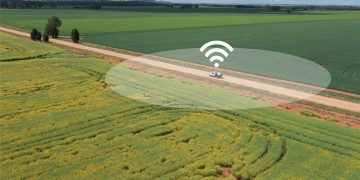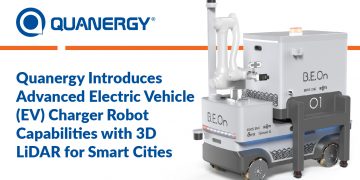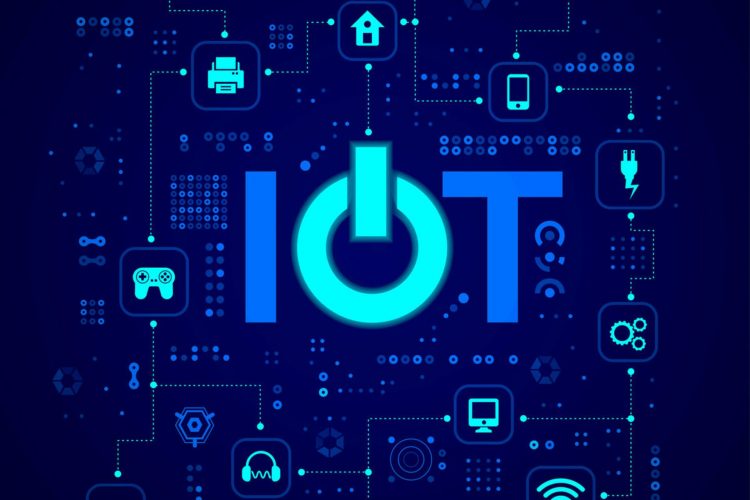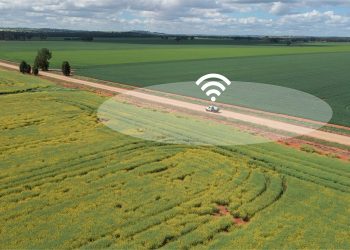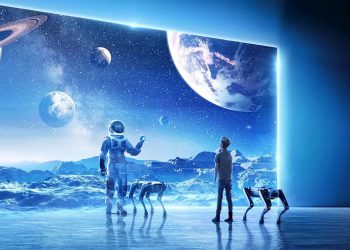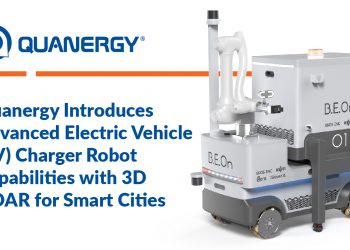What is internet of things?
The simple answer: Everything.
Let’s add lots of things like sensors, various systems, computer applications, lots of potential users, and everything you love and want to be connected to?
The inevitable question always arises, though, when you bring the Internet of things (IoT) into play.
Which devices can IoT be plugged into, and how?
That’s easy: every device that has an internet connection could work with your IoT.
To help you out, here are a few of my favorite IoT devices, with the important parts:
- IoT Products that are best for software development, hardware prototyping, and power supply testing
- IoT Products that can be used to deliver the real-world data to mobile devices
- IoT Devices and Kiosks that can be used as self-serve kiosks for IoT
- IoT Project Involved with Digital Data Analytics
As always, IoT connected appliances, wearables, and devices have the potential to provide complete automation and connectivity to the smart home.
Companies are rushing into this area with innovative concepts that may be worth taking a closer look at.
What are the elements of IoT?
IoT refers to the convergence of all devices, the Internet of Things. The convergence of different technologies is a natural stage of the evolution of the Internet. The Internet of Things will utilize Internet technologies to create a distributed networked software-based platform for the control of devices and the exchange of information.
The Internet of Things and computer networked devices may serve as a “brain” to the Cloud, and it is expected that the Cloud will aid in enabling business-to-business-to-consumer (B2B2C) business-to-business transactions. The development of applications based on the Internet of Things will allow devices to make real-time decisions and to connect to the Internet, giving many interconnected devices access to the Cloud.
The Internet of Things (IoT) is the emerging area of computer science, design, and development that integrates machine learning, databases, and software platforms.
Furthermore, IoT is a diverse area encompassing electronic devices such as thermostats, light bulbs, telephones, refrigerators, toys, etc. With the combination of artificial intelligence and a global network of smart devices, IoT will allow for new experiences in the services, products, and products that people use daily.
What applications can IoT be used for?
As part of the IoT, IoT applications can be utilized to provide everything from sending instructions to control a car to providing hands-free support to navigation.
There are many different types of connected devices, the IoT can help to manage these in a single place. Being able to prevent incidents and keep your assets secure is a great advantage. The growth of IoT is moving at an amazing speed, there is no doubt that there will be a lot more devices connected to the Internet and at the same time, the threats to our data can and will be shared among all those devices.
It is time that we see more control on the part of the network operators, so that the key network elements (outdoor or indoor) can be connected using the IoT.
As we noted, there are many different types of connected devices, the IoT can help to manage these in a single place. Being able to prevent incidents and keep your assets secure is what IoT is all about.
Furthermore, in today’s business environment, finding the appropriate smart connected devices for your needs is not an easy task.
Take the old saying ‘reduce as much as possible’. IoT helps to reduce these ‘additional” costs by providing a common platform for users to create, acquire and manage devices. And with the potential of IoT products, IoT is bringing to the table a totally new platform to develop, manage and deploy IoT products.
How can the internet of things be used for industrial purposes?
The uses of digital devices are rapidly changing and are already achieving common use. The internet of things encompasses digital devices that monitor, analyse and control supply chain processes.
It has many applications, but particularly interesting to me is the wide variety of wireless and Internet-of-Things sensors that are being developed to monitor water safety, people walking and movement, soil composition, general temperature and proximity of humans to the earth.
These sensors have applications in the food chain, where they could monitor plant health, animal health, farm machinery health and efficiency.
There is also a shortage of workers to fill environmental and agricultural roles that require on-site observation, so companies are looking at methods to use robots to replace labour at these jobs.
In the automotive industry, for example, the human-machine interface will be the main interface of the future. This could make it the industry of the future.
The one thing that will prevent this is the cost of the human-machine interface.
To solve the problem of the autonomous driving of cars, it is necessary to solve the problem of the human-machine interface.
Even today, the human-machine interface is not always the most convenient. That’s why we should invest in a “smart” experience for people.
AI is the answer to these issues. AI will make the human-machine interface more convenient.
But how do these technologies and materials interact with humans, and what role can they play in improving our lives?
In addition, IoT can transform the nature of business by applying the tools and security of the web, such as smart contracts.
Enter the IoT Alliance, an international non-profit group that helps to build IoT strategies to deliver better systems for business.
It provides information, tools and security assistance to enable devices and networks to benefit from the benefits of the web.
We will learn more on how these additions can help the industry grow more readily to build secure IoT solutions.
What are the challenges of IoT?
In 2020, the things that are making IoT difficult are that we’re really short of computational power and sensors. So it’s really quite easy to have very big worlds on the internet where we have thousands of people from all over the world and they want to interact with each other, but in reality there are just not enough nodes to see all that’s happening.
It’s really difficult to do that on a scale that’s really useful, because in an IoT world it is not only the physical devices themselves that will interact, but also IoT platforms like web browsers, sensors, GPS, communication devices, and of course the equipment that’s connected to those things.
Recreation has always been integral to technology development. But as people and companies connect to IoT, we need to have the right people in place to make the experiences as smooth as possible. This is where our list of mentorship and networking experts comes in.
In the coming years, the Internet of Things will change the way we live our lives. For the majority of people, this will involve the predictable, everyday use of advanced devices (mobile in size), but there are opportunities across a wide range of sectors. As technology becomes more ubiquitous, the IoT will be a key driver of economic growth and social change.
What are the benefits of IOT and how can it affect us as human being?
The Internet of Things provides a set of benefits for individuals and society. We will see:
- Personalized services
The Internet of Things provides a set of benefits for individuals and society. We will see personalized services like a driverless car or smart home developed. We will see a new way of interacting with the world, and a new way of thinking about how to interact with the world.
The Internet of Things is the basis for a new business model that will support the digital economy, and this will be the most innovative and dynamic sector in Europe for a long time to come, which is why we are working to make sure it is fully integrated into our economy.
The European Commission’s proposal for a Digital Single Market will provide a more secure and open digital environment, enabling businesses to be more competitive and increase efficiency and innovation.
By 2025, all EU Member States will be able to generate at least 50% of their digital exports on the Internet.
- Broadcasting products and services
We will see Broadcasting products and services which will be more competition to the likes of the BBC iPlayer and YouTube. We will see the development of smart grid models to provide utility services and electric vehicle charging stations.
Digital transformation will benefit connectivity within and between businesses and society at large.
The rise of the Internet of Things will be a boon to the connected economy. Economic growth and prosperity will continue to be the big drivers of the Internet of Things, and we believe that the UK will be at the forefront of the technological revolution.
- More efficient use of infrastructure and human resources
We will see More efficient use of infrastructure and human resources like machine learning and artificial intelligence. For instance, using IoT, a smart thermostat has the ability to learn from its user’s habits and adjust its energy consumption based on temperature, time of day and other variables.
The Internet of Things will provide high-quality services to our society. Companies like Google, Facebook, Apple and others will be able to automate processes with the help of software. The ability to monitor and control the devices in our homes, offices and vehicles will make life easier. We will also be able to use IoT devices like smart thermostats and smoke alarms to make sure that no one is awake in the middle of the night.
We will see cities that are fully connected with sensors. With the help of sensors, smart meters, motion sensors, and others will be able to talk to each other and communicate with other smart devices. This will enable us to control our cities with just a few buttons on our phones.
- New ways to enjoy and record experiences
The IoT is a new computing platform and network that uses sensors, IP cameras, and smartphones for network connectivity, that can also be used to create an open, extensible platform for creative expression. We use the IoT for several purposes such as:
- recording experiences: IoT uses the Internet of Things to record your life and send it to your friends or family in the form of a video or photos. The IoT can also be used for creating and publishing your own experiences.
- sharing experiences: IoT gives you the ability to share your experiences with your friends and family in the form of a video or photos.
- community building: It can create a virtual place where people can connect to each other and share their experiences.
- network automation: IoT uses the Internet of Things to create a network that automatically controls the smart home devices in your home.
- security: It can help to create a security network that can help keep your home and personal devices secure.
- business: IoT can create a smart business networking platform that can be used for add-ons like marketing campaigns and financial reports.
- transportation: IoT uses the Internet of Things to create a mobile network that can serve as a transportation network for your family and friends.
New possibilities for the economy and society.
The Internet of Things can be used to explore new possibilities for the economy and society like never. Although the Internet is now a ubiquitous part of our lives, it has sometimes had a reputation for being difficult to get a handle on — and for making the experience of using it feel like a technological black box.
But a new set of tools and services are making this old paradigm of Internet access feel like a very different experience.
And, as the IoT continues to get more powerful and ubiquitous, we are beginning to see its potential impact on the economy.
For example, the IoT could be used to monitor and manage the health of a patient’s body.
It could also be used to track the location of an object or location within a building, or to provide information on whether a building has been recently vandalized.
The IoT will also be able to connect to our digital lives and our physical lives, which could lead to a new generation of wearable devices that help us live better lives — even when we’re away from our computers.
We’re connecting our devices to the Internet and doing so in ever more sophisticated ways. We’re learning how to manage our lives with ever more sophisticated tools and services. And we’re using increasingly advanced mobile devices to enhance our lives.
The Internet of Things transforms our lives and our digital lives in ways we can’t imagine yet — and that’s why it’s to be expected to have an impact on the economy.

for developers and enthusiasts

